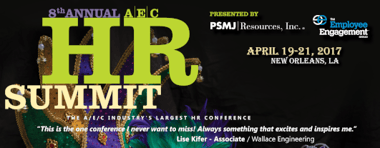 Professionals in the architecture, engineering, and construction (A/E/C) industries spend a significant amount of time designing and building things for clients. When our primary focus is on providing services and products to clients, we can miss the opportunity to reflect on our own operation.
Professionals in the architecture, engineering, and construction (A/E/C) industries spend a significant amount of time designing and building things for clients. When our primary focus is on providing services and products to clients, we can miss the opportunity to reflect on our own operation.
Optimizing performance, increasing profitability, and being more efficient are only a few examples of initiatives that are swallowed up by daily operations. Chris McChesney, Sean Covey, and Jim Huling, who wrote “The 4 Disciplines of Execution”, commonly refer to this as the “whirlwind.” They describe the whirlwind as “the massive amount of energy that’s necessary just to keep your operation going on a day-to-day basis; and, ironically, it’s also the thing that makes it so hard to execute anything new.”
As I meet and collaborate with leaders in the A/E/C industry, I have seen at least one, and often several, of the following symptoms within most firms:
-
Don’t understand or leverage the strengths of the workforce.
-
Don’t have the right person in the right role, or the right person on the bus.
-
Managers who were great employees, but unsuccessful as a team leader.
-
Workforce behaviors that need to change.
-
Lack of performance by an individual, team or department.
-
Projects that never seem to get off the ground.
-
Reward systems that don’t drive results.
-
Low employee morale or engagement.
-
Large number of employees nearing retirement age.
These symptoms, if left untreated, can destroy a company’s sustained competitive advantage and in extreme cases can lead to the demise of an organization. If you recognize one or more of the symptoms above in your organization, it may be time to invest in some remodeling.
Designing Your Workforce
Any remodeling project requires a significant amount of energy, time, resources, and equipment. Before jumping in, it’s important to understand the needs, pains, problems, and enhancements that will serve as the project’s focal points. To some, the fun begins when the imagination takes over and starts to brainstorm and analyze possible solutions or ideas. It may make sense to pick one department or division to use when you create and test your workforce prototype. This will allow for improvements and a redesign to take place before expanding to the entire company. A company’s purpose, mission, values, and vision are the foundation of the design process and should guide the decision making process. Business life cycle status, industry trends, and utilization of technology can significantly influence the type of workforce needed. The lead time needed for the design process will vary from one company to another, and when done right the transition to the build process should be smooth.
Building Your Workforce
It is difficult to fight the urge to talk about specific employees and current positions during the design process; however, it is critical that specific employee discussions wait until the building process. Several things should take place during the building process including: assess current staff, confirm the right person for the right role, establish training/development plans, implement process to leverage strengths, and determine if staffing changes are required. This building process will position an organization for the future whether it is for significant growth or to sustain competitive advantage in the marketplace.
If you are interested in learning more about remodeling your workforce, join the Design & Build Your Workforcewebinar to gain greater insight on how to take your workforce to the next level.
About the Author: Kristi Weierbach, Ph.D., SPHR, SHRM-SCP, FPC is HR/Payroll Advisory Services Manager, at Stambaugh Ness. Kristi focuses her extensive expertise on helping clients create a unique human resources architecture, applying practical solutions that complement strategic goals and company culture. She has a genuine passion for working with companies and positioning them to meet their organizational goals. Kristi’s deep knowledge of human resources and payroll enables her to help companies overcome their struggles by providing strategic direction on implementing and improving policies and procedures. Working collaboratively with clients, she skillfully turns their human capital management into a competitive advantage. Kristi is an active blogger and frequent presenter on human resource and payroll related topics.
 Thank you to Stambaugh Ness for being a sponsor of PSMJ and TEEG's 2017 A/E/C HR Summit, taking place April 19-21 in New Orleans. They are also an exhibitor at this premier gathering of A/E/C human resources professionals.
Thank you to Stambaugh Ness for being a sponsor of PSMJ and TEEG's 2017 A/E/C HR Summit, taking place April 19-21 in New Orleans. They are also an exhibitor at this premier gathering of A/E/C human resources professionals.



